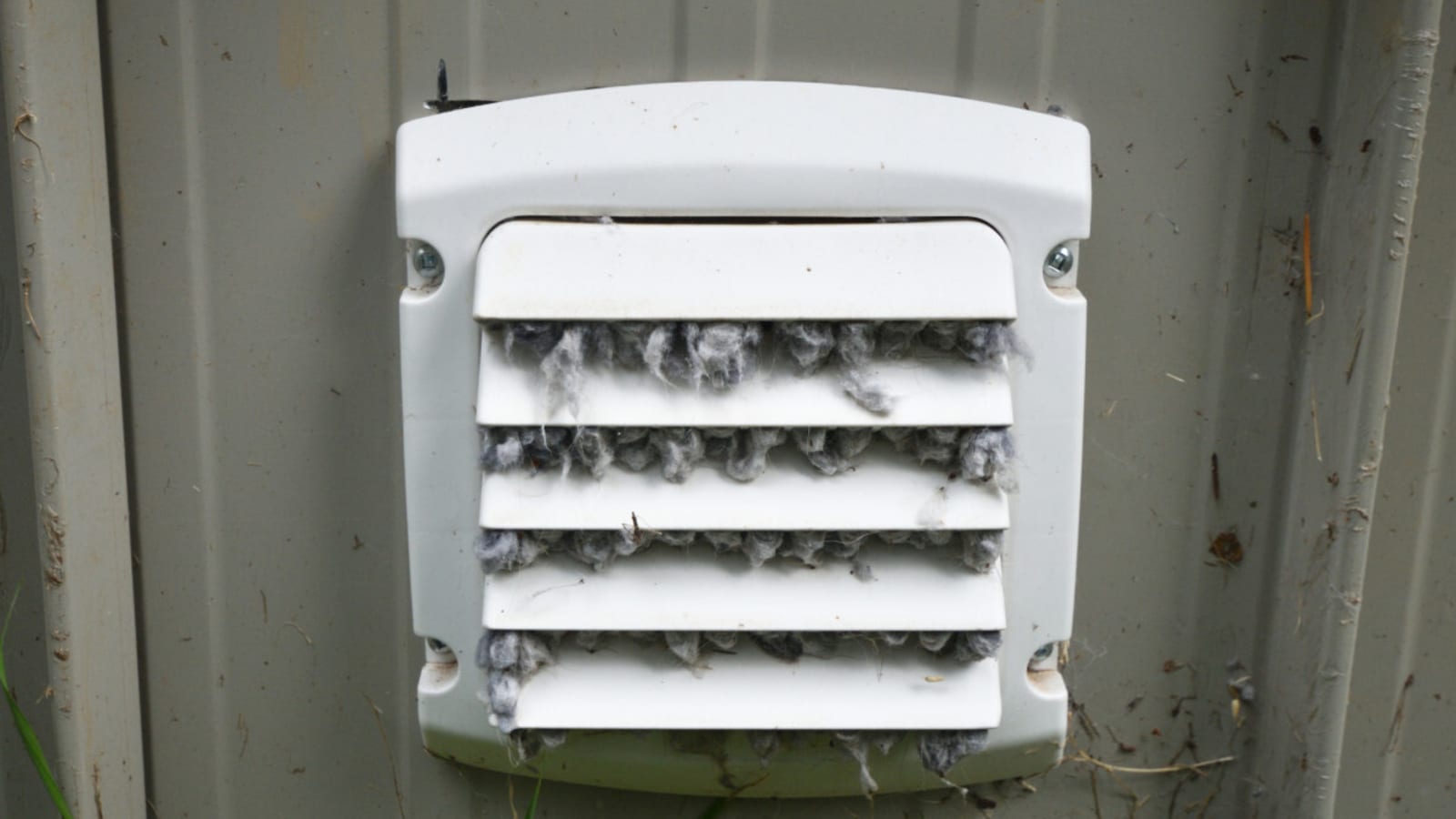
I've always said that cleaning your dryer vent twice a year — with the daylight savings time changes — is an easy, and very satisfying chore. Some experts recommend doing it quarterly. Unfortunately, many homeowners only focus on the dryer lint screens and nothing more, which puts the entire house at risk.
According to the National Fire Protection Association (NFPA) and Federal Emergency Management Agency (FEMA), clogged dryer exhaust vents are a leading cause of residential house fires, often triggered by a build-up of lint, dust, and fibers that can ignite quickly under heat. On top of that, vent exhaust openings can become a target for nesting animals which prohibits proper airflow. While monitoring for clogged dryer vents may not be top-of-mind, doing it regularly can prevent these types of home fires. Plus, a clear dryer hose helps your dryer work more efficiently, reducing drying times, and lowering energy bills.
Not sure where to start? We're covering how you can clean an electric dryer vent. While gas dryers aren't as prevalent anymore, some homeowners still use them, especially in older homes. Make sure you call a professional to maintain the vent on your gas dryer, rather than disturb gas valves and lines to the machine.
How to Clean Your Home's Dryer Vent
You'll Need
- Dryer vent cleaning kit (includes a rotary brush and rod)
- Cordless drill
- Aluminum tape for sealing connections (not "Duck" tape duct tape!)
- Shop Vac
- Vacuum cleaner with a crevice attachment
Step 1: Unplug and Slide the Dryer Away From the Wall
First, unplug your dryer and carefully slide it away from the wall. It needs to be far enough away for you to access the dryer duct, both to disconnect the hose and to vacuum the area at the base of the appliance.
There are two common types of dryer exhaust ducts:
- Rigid Metal Ducts: These are non-flexible and usually come in straight segments with angles (45° or 90°) to accommodate turns.
- Semi-Rigid Ducts: These flexible dryer hoses look similar to a vacuum cleaner hose. While they're popular for use in tight spaces, the semi-rigid ducts’ folds can trap dust more easily.
As you pull the appliance away from the wall check the hose's condition. Make sure it's up to code (a 4-inch pipe is standard), free of kinks, and securely attached both to the vent leading out of the house and to the back of your dryer.
Step 2: Loosen the Taped Connections and Clean the Area
With the dryer unplugged and away from the wall, you'll be able to see how the vent hose connects to the back of the dryer. In all likelihood, a metal coupling holds the end of the hose in place, and aluminum tape is wrapped to seal the connection.
- Disconnect the coupling and peel off any tape to free the vent hose from the back of the appliance.
- Once disconnected, use your vacuum’s crevice attachment to clean any dust and lint around the appliance base and inside the duct opening.
Step 3: Assemble the Dryer Vent Cleaning Kit
Most dryer vent cleaning kits come with an extendable rotary brush that connects to a cordless drill, and a reducer that will allow you to connect the 4-inch vent hose to a Shop Vac. The setup and use of these components matter:
- Take the extendable brush and cordless drill outside.
- Locate your dryer vent, and use a clip (like a binder clip or a workshop clamp) to hold the vent door or flap open.
- Back inside, connect the 4-inch duct hose to the vacuum using the provided reducer. If the vent flapper door is open, you can safely turn on the Shop Vac. If the vent door is NOT open, do not turn on the vacuum — the suction has the potential to damage the hose.
This is a great time to ask for a partner's help; I always appreciate having an extra set of hands indoors monitoring the vacuum and hose attachment while using the dryer vent pipe brush outside.
Step 4: Use the Drill-Activated Brush to Clean
- Back outside, make sure that the flapper valve of your exterior vent cover is clipped open, then insert the rotary brush into the hose.
- Turn on the power drill, and slowly move the brush up and down within the dryer vent duct. As the drill spins, the brush will agitate the dust lint buildup. The vacuum will suck the loose debris into its vacuum canister.
- Once complete, turn off the drill, pull the brush back out of the vent hose, and remove the clip that is holding the flapper cover open. Your work outside is done.
- Some kits also come with a smaller brush drill attachment that you can use to clean the dryer's lint trap (it'll remind you more of the bottle brushes you use in the kitchen sink). Attach the smaller brush to the cordless drill to clean the lint filter housing, and run a vacuum cleaner with a crevice attachment in the opening to collect dust and lint as it becomes loose.
Step 5: Reattach and Secure Duct Connections
- Once the interior and exterior ducts are clean, reattach the vent pipe to your dryer.
- Check the duct thoroughly for any holes, cuts, or damage.
- Use aluminum tape to seal the connections for a secure, leak-free fit.
- Tighten the coupling and press the dryer back into place, making sure the duct stays straight and unobstructed.
- After cleaning, run the dryer. You'll want to do this to make sure there’s good airflow from the vent outside. This confirms the duct is securely connected inside, and free of obstructions.
FAQ
How often should I clean my dryer vent?
The pros recommended to clean your clothes dryer vent every three months. Regular cleaning reduces the risk of fire, helps clothes dry faster, and lowers energy costs by keeping the dryer efficient. I use the kit for our exhaust vent hose every six months at my own risk, but I regularly (monthly) use the dryer vent brush to maintain the inside housing for the lint trap.
Can I use regular tape on my dryer vent?
No, regular duct ("duck") tape isn't technically "duct" tape. It isn’t heat-resistant and can loosen over time, creating gaps that trap lint. Use aluminum tape designed specifically for HVAC systems to ensure a durable, fire-safe seal.
What are the signs my dryer vent needs cleaning?
If clothes take longer than usual to dry, or if the dryer feels excessively hot when you do a load of laundry, these could indicate a blocked vent. Also, if you notice a burning smell or lint accumulation around the vent opening, it’s time to clean the duct thoroughly.
More must-reads:
- Five ranked CFB teams feeling most pressure to win in Week 8
- Hosts Mexico, Canada soar, crash while prepping for 2026 World Cup
- The 'NFL 100-touchdown club' quiz
Breaking News
Trending News
Customize Your Newsletter
 +
+
Get the latest news and rumors, customized to your favorite sports and teams. Emailed daily. Always free!








